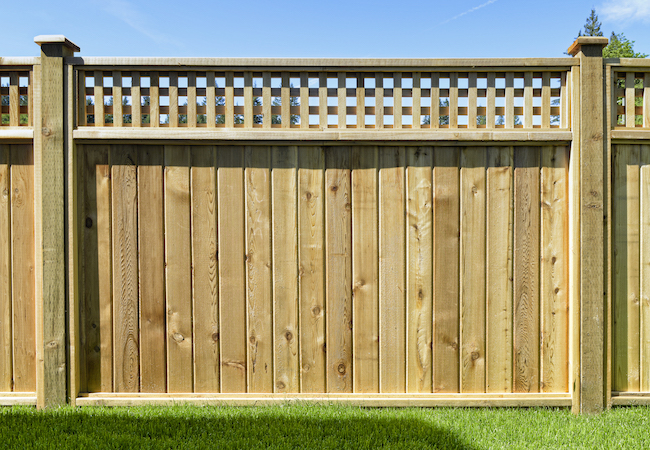All Categories
Featured

When considering installing a fencing on your home, one of the most important actions is to recognize whether you need a license. Fence setups frequently require a license to ensure that the structure follows local zoning laws, developing codes, and safety requirements. The details licenses required can differ depending on your place, the kind of fencing you plan to mount, and the height or positioning of the fence. Right here's an overview to assist you browse the process of obtaining a fence permit and ensure that your installment is legal and hassle-free.
Why You Required an Authorization for a Fence Installment. The authorization process assists neighborhood authorities confirm that your fencing does not conflict with web traffic presence, regard your residential property lines, or go against elevation restrictions. Setting up a fence without a license can result in penalties, elimination of the fence, or hold-ups in building and construction, so it's necessary to examine whether a license is needed prior to beginning your job.
Kinds Of Permits You Might Require. There are a couple of usual sorts of permits you could need for a fence setup:
Structure Permit. A structure license is the most common permit required for fence installations. This license guarantees that the fencing meets safety requirements and is created according to neighborhood building regulations. A building permit is typically required if the fence goes beyond a particular elevation (frequently 6 feet), is made from certain materials, or is located near a public sidewalk or road.
Zoning Permit. A zoning permit might be called for to verify that your fencing adheres to neighborhood zoning legislations. Zoning laws can dictate where a fencing can be put on your building, exactly how high it can be, and whether it is allowed in particular locations (such as along property lines or ahead backyards) Some towns have guidelines limiting the elevation of fences in the front yard to guarantee presence for drivers and pedestrians.

Trouble Authorization. If you are building a fence near your property line or close to a road, you may need an obstacle authorization. An obstacle describes the distance a structure, consisting of fencings, need to be from the home line. Obstacle laws vary by place, and making sure that your fence is positioned correctly can stop disputes with next-door neighbors and stay clear of infractions.
Home Owner Association (HOA) Authorization. If you stay in a community governed by a Homeowner's Organization (HOA), you might need approval from them in addition to neighborhood licenses. HOA regulations commonly cover the type of materials, height, design, and color of fences. Also if your neighborhood government doesn't call for a permit, your HOA may still have specific guidelines that require to be adhered to.
How to Obtain a Fencing Authorization. To obtain a fence permit, you'll require to contact your local structure department or planning office. The application process generally entails filling in a form, paying a fee, and submitting a site strategy of your residential property that shows the recommended place of the fence. You might also require to consist of information about the products, elevation, and design of the fence.
Sometimes, a local official may need to evaluate your building before approving the permit. As soon as the permit is provided, you will certainly be licensed to wage your fence installation.
When Is an Authorization Not Required? In particular circumstances, a permit might not be called for. These situations can consist of:
Reduced Elevation Fences: In lots of locations, fencings that are listed below a specific elevation (usually 3 to 4 feet) may not require a permit, particularly if they are positioned in the backyard or various other non-visible locations.
Fence Replacement: If you're replacing an existing fencing with the exact same elevation and product, some locations might not need a brand-new license.
Non-Obtrusive Fences: Decorative or short-lived fences, such as those utilized for horticulture or landscaping functions, might not need authorizations as long as they are low and not long-term.
Nonetheless, it is very important to talk to your local zoning office or structure division, as policies can differ by territory.
Effects of Not Getting a Permit. Falling short to obtain the required authorizations can bring about considerable repercussions. These include fines, compelled removal of the fence, or also delays in building and construction. In addition, if your fence does not meet neighborhood regulations, you might face legal problems with next-door neighbors or regional authorities.

Verdict. By making sure that you follow neighborhood laws and acquire the essential permits, you can ensure and stay clear of costly mistakes that your fencing is legitimately compliant. Examine with your local structure division, HOA, and zoning workplace to establish what licenses are needed for your specific fence task.
Latest Posts
Take Advantage of Limited-Time Auto Repair Deals in Chicago at Montclare Auto Repair
Published en
1 min read
Improve Your Home's Outside with Weathercraft's Siding Solutions
Published en
1 min read
Unlock Your Financial Partner at WyHy – Key Advantages for Your Financial Success
Published en
1 min read
More
Latest Posts
Take Advantage of Limited-Time Auto Repair Deals in Chicago at Montclare Auto Repair
Published May 28, 25
1 min read
Improve Your Home's Outside with Weathercraft's Siding Solutions
Published May 27, 25
1 min read
Unlock Your Financial Partner at WyHy – Key Advantages for Your Financial Success
Published May 25, 25
1 min read